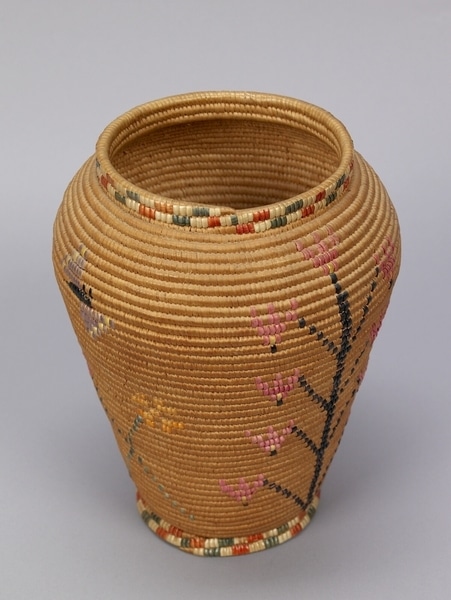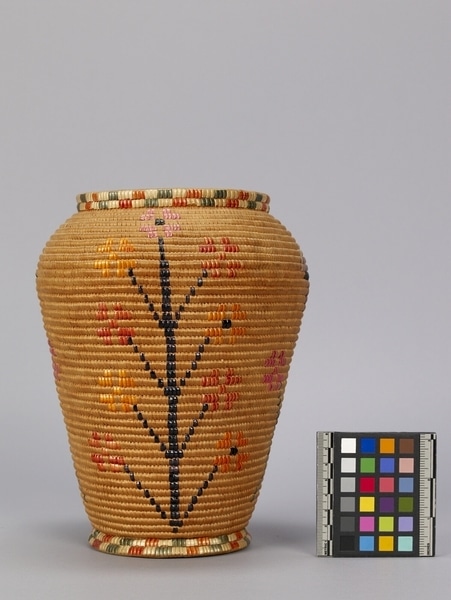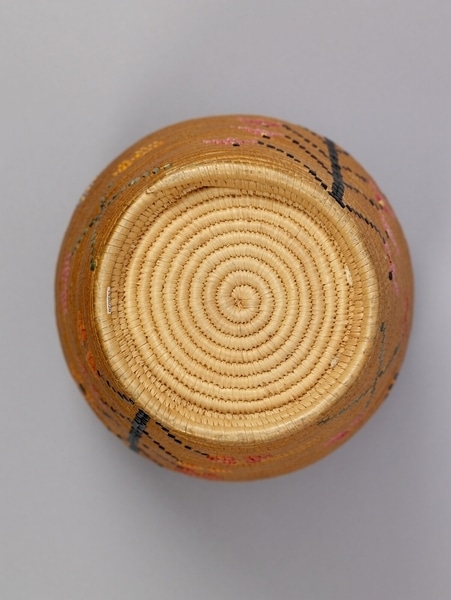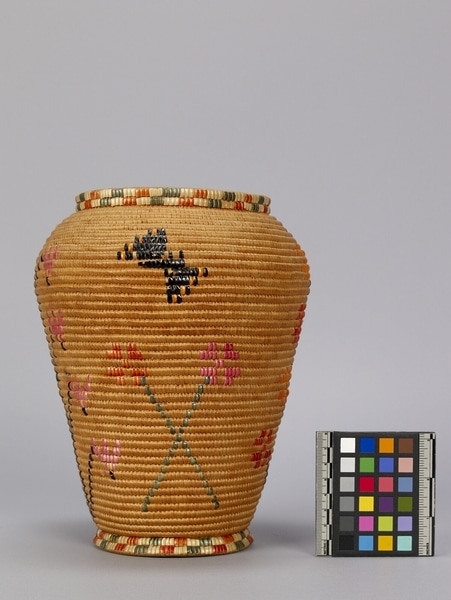Basketry Vase Item Number: 1435/28 from the MOA: University of British Columbia




Description
Coiled cedar root basket with root foundation. Watchspring base with foot. Basket widens towards the top and then narrows to create a rim. Imbricated plant designs and butterflies with pink and orange accents.
History Of Use
A gradual change can be seen in basketry traditions from the 1820's to the 1940's with the decline of utilitarian basket making and the increase in decorated baskets made for sale.
Narrative
When this basket was donated, the maker was unknown. The basket was classified as Central Coast Salish on the basis of techniques and materials: lengths of cedar roots sewn over bundles of finely split cedar roots, and imbricated patterns of dyed grass and cherry bark. However, in 2018, Tony Hardie brought a basket to MOA that was almost identical to this one, made by his great-grandmother, Christine Hardie, a Secwepemc basket maker. It was clear that this basket was made by the same hand.
Specific Techniques
Sto:lo weaver Wendy Ritchie stated, in 2000, that this type of basket appears to have been made with a bone awl because it is fine (metal awls make larger holes and the point of entries become blackened). However the bark used for the design elements was thin and is breaking up. She further noted that the bright colours were likely achieved through the use of commercial dyes.
Iconographic Meaning
This basket has a shooting star wild flower (tmicw) design.
Cultural Context
made for sale
Item History
- Made by Christine Hardie (Maker) in British Columbia, Canada during 1930
- Collected during 1960
- Owned by Alice M. Falconer before November 5, 1990
- Received from Alice M. Falconer (Donor) on November 5, 1990
What
- Name
- Basketry Vase
- Identification Number
- 1435/28
- Type of Item
- vase
- Material
- cedar root, cherry bark, dye and grass
- Overall
- height 24.0 cm, diameter 18.0 cm
Who
- Culture
- Interior Salish: Secwepemc
- Creator
- Christine Hardie (Maker)
- Previous Owner
- Alice M. Falconer
- Received from
- Alice M. Falconer (Donor)
Where
- Holding Institution
- MOA: University of British Columbia
- Made in
- British Columbia, Canada
When
- Creation Date
- during 1930
- Collection Date
- during 1960
- Ownership Date
- before November 5, 1990
- Acquisition Date
- on November 5, 1990
Other
- Item Classes
- basketry
- Condition
- good
- Accession Number
- 1435/0028